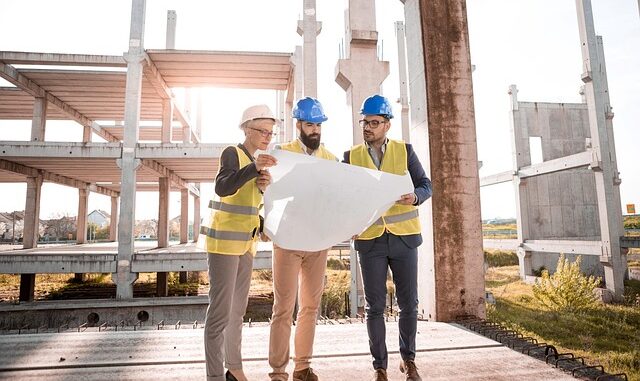
Summary
This article provides 10 best practices for managing the affordable housing construction process. From meticulous planning and budgeting to leveraging technology and fostering community engagement, each step is crucial for success. By following these practices, developers can navigate the complexities of affordable housing construction, ensuring projects are completed on time, within budget, and to the required quality standards, ultimately contributing to the creation of much-needed affordable housing.
Focus360 Energy: property compliance services – pre-planning to post-construction. Learn more.
** Main Story**
Alright, let’s dive into building affordable housing. It’s a field with huge demand, but man, it’s complicated. You’ve got funding hurdles, tricky regulations, and so much more. I’ve put together what I think are ten best practices, based on my own experiences and what I’ve seen work. Hopefully these will help you navigate the process and boost your chances of success.
I. Planning and Budgeting: Laying the Groundwork
-
Crystallize Your Vision: What kind of impact do you want to make? I can’t stress this enough: Define your goals, clearly. Are we talking apartments for families? Or maybe supportive housing for seniors? Knowing who you’re building for is going to influence everything, from the site you pick to the materials you choose.
-
Craft a Realistic Budget: Budgets, everyone’s favorite! Seriously though, don’t underestimate costs. You need to factor in everything. Land, materials, labor, permits, design, even those pesky contingency funds. And trust me, you need those. I’d say, shoot for at least 15% extra. If you can, bring in a quantity surveyor to get super-precise cost estimations. And don’t forget to explore all your funding options! We’re talking government grants (like CDBG or HOME), tax credits (LIHTC is a big one), and even private investments.
II. Site Selection and Due Diligence: Location, Location, Location
-
Strategic Site Selection: Location is key, right? But in affordable housing, it’s critical. Aim for those “high resource” areas; it can seriously improve your funding prospects. Then, think about access (transport, services), zoning, even environmental factors. Are there protected trees? What about utilities? Does it fit with the surrounding community? The site has to align with your goals, both now and in the long run.
-
Thorough Due Diligence: Dig deep into that site’s history. Any hidden issues? What about existing infrastructure, ground suitability, access? Any old agreements or deed restrictions that could cause problems? You want to uncover all that stuff before you start construction to avoid nasty surprises. Trust me on this.
III. Team and Communication: People Power
-
Assemble the Right Team: You know what they say: “You’re only as good as your team.” Get experienced architects, contractors, project managers, even legal counsel. And definitely find a builder who knows affordable housing inside and out. Look for a solid reputation for quality and reliability. Open communication is a must, so encourage collaboration from day one.
-
Transparent Communication: Clear channels are the only channels that work. Set them up! Hold regular on-site meetings, maybe monthly or bi-weekly. Talk about progress, challenges, and make sure everyone’s on the same page. And document everything. Decisions, agreements… put it all in writing.
IV. Construction Management: Getting it Done
-
Efficient Project Management: I’m a big fan of project management software. It really can help to keep things organized. Track tasks, manage budgets, and keep everything documented. That way, your workflows are streamlined, everyone’s accountable, and it’s easier to be transparent.
-
Quality Control: Don’t skip on this one! Implement quality control measures at every stage. Schedule regular inspections, do “frame walks” mid-construction, and really scrutinize the plans. Look for any issues proactively. And I’d recommend using durable, sustainable materials. It’ll save you money in the long run, and it’s better for the residents.
V. Community Engagement and Sustainability: Building Bridges
-
Community Engagement: You need the community on your side. Communicate with local residents early and often. Address their concerns, highlight the project’s benefits. Building those relationships is crucial for a smooth build. We had a project stalled for months because we didn’t do enough community outreach up front. Don’t make that mistake.
-
Sustainable Practices: Go green! Prioritize energy efficiency, water conservation, and sustainable materials. It reduces your environmental impact, it lowers operating costs, and it makes for happier residents.
So, there you have it – ten best practices for building affordable housing. It’s definitely a complex field, and you know these projects can sometimes require up to 20 funding sources. That is why meticulous planning and effective execution are key to success. Now, go build some awesome homes!


The emphasis on community engagement is so important. Thoughtful communication and addressing local concerns early can truly pave the way for smoother project execution and foster positive relationships, benefiting the community long-term.
Thanks for highlighting the importance of community engagement! Building strong relationships from the start really does lead to more successful and impactful projects. I think it is often not emphasized enough, so I am glad that you noticed its inclusion in the article. Perhaps more developers should prioritize that facet of project planning.
Editor: FocusNews.Uk
Thank you to our Sponsor Focus 360 Energy
The recommendation of a 15% contingency fund is insightful. In practice, what methods have you found most effective for determining the appropriate contingency percentage for affordable housing projects, considering the unique variables involved?
Great question! The 15% is a good starting point. I’ve found that a Monte Carlo simulation, factoring in potential risks like material price fluctuations and permitting delays, provides a more tailored contingency percentage for each project. What other risk assessment tools have you found useful?
Editor: FocusNews.Uk
Thank you to our Sponsor Focus 360 Energy
Sustainable practices, eh? Does “go green” include painting everything avocado and slapping on some solar panels, or are we talking legitimately innovative eco-friendly solutions? Spill the tea!